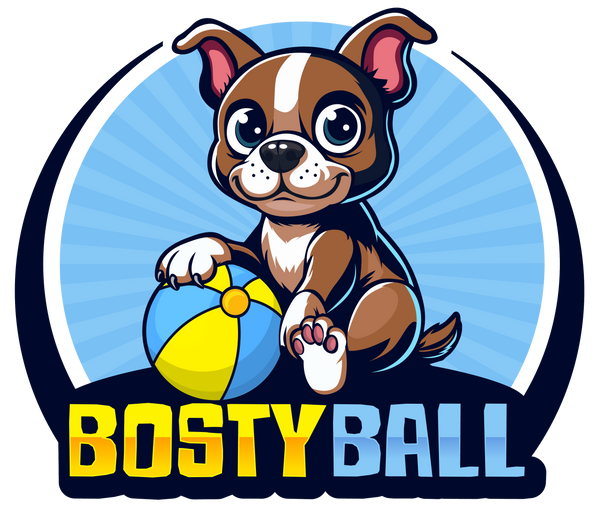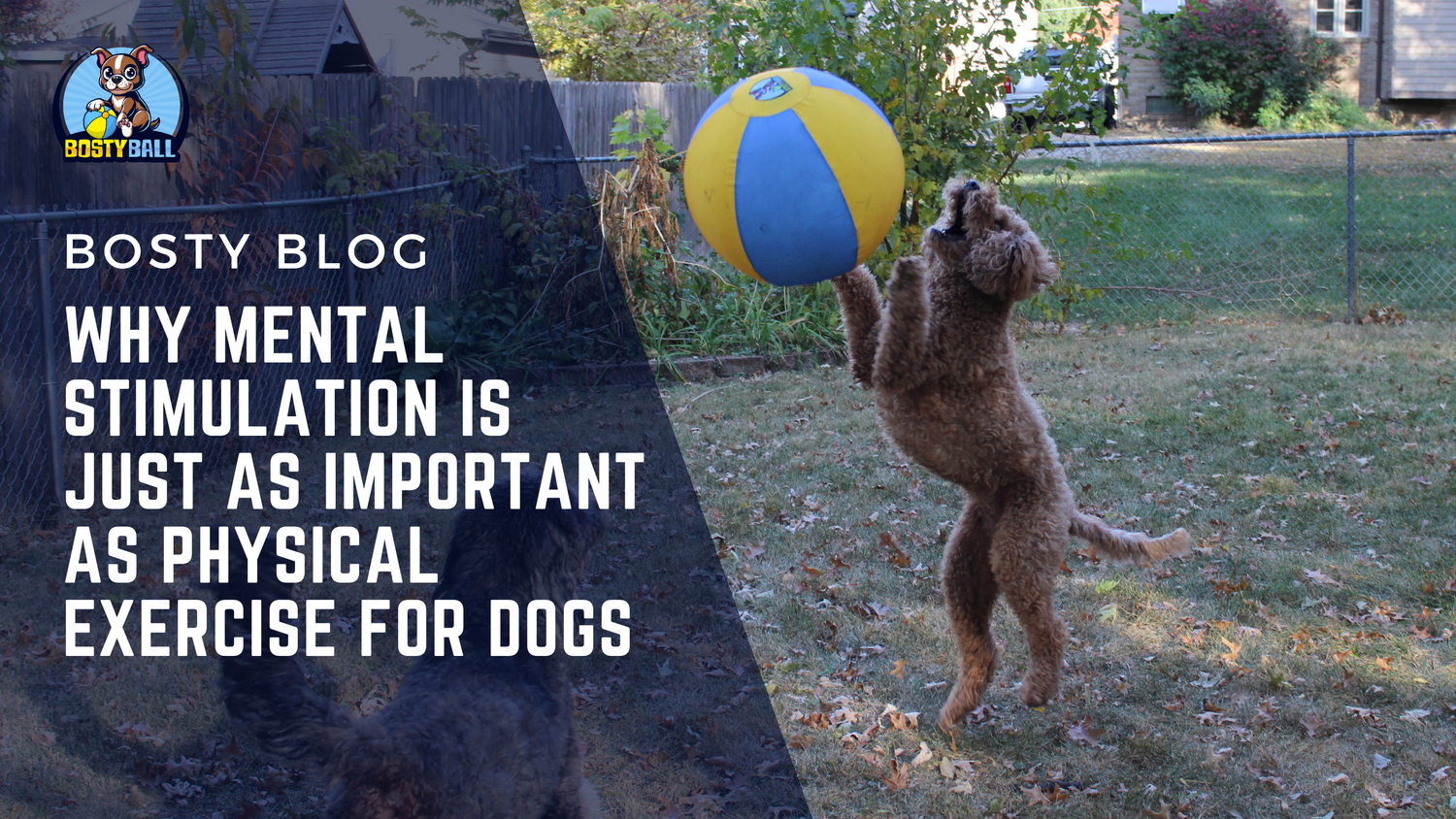When you think about keeping your dog healthy and happy, you probably think of walks, playtime, and fetch. But did you know that mental stimulation is just as important as physical exercise? While running and playing help burn off physical energy, engaging your dog’s mind prevents boredom, reduces anxiety, and strengthens their cognitive abilities.
Without enough mental enrichment, dogs can become bored, anxious, and even destructive. If you’ve noticed your dog chewing furniture, barking excessively, or pacing restlessly—even after a long walk—it might be a sign that they’re craving more mental engagement.
In this guide, we’ll explore why mental stimulation matters, the signs that your dog needs more of it, and easy ways to keep their mind sharp.
Why Mental Stimulation is Essential for Dogs
Dogs are naturally curious and intelligent animals. In the wild, they would spend much of their day hunting, scavenging, and problem-solving. Our modern pets, however, often lack opportunities to engage their instincts. That’s where mental stimulation comes in.
Here’s why it’s crucial:
-
Prevents Boredom and Destructive Behavior: When dogs don’t have enough to do, they may resort to chewing, digging, and barking out of frustration. Mental stimulation keeps their minds occupied, reducing destructive tendencies.
-
Reduces Anxiety and Stress: Engaging a dog’s mind helps alleviate anxiety, especially in situations where they are left alone or exposed to unfamiliar environments.
-
Improves Problem-Solving Skills: Interactive play encourages dogs to think, analyze, and solve problems, strengthening their cognitive abilities.
-
Boosts Confidence and Reduces Fear: Successfully completing mental challenges builds confidence, making dogs more comfortable in new situations.
-
Slows Cognitive Decline in Older Dogs: Mental exercise helps keep senior dogs sharp and delays the onset of cognitive dysfunction.
Signs Your Dog Needs More Mental Stimulation
Not sure if your dog is getting enough mental exercise? Here are some common signs that your dog might be craving more mental enrichment:
-
Destructive Behavior: Chewing on furniture, shredding pillows, or digging up the yard.
-
Excessive Barking or Whining: Vocalizing out of boredom or frustration.
-
Restlessness and Pacing: Even after physical exercise, your dog struggles to settle down.
-
Increased Attention-Seeking Behavior: Constantly following you around or nudging for interaction.
-
Obsession with Repetitive Behaviors: Tail chasing, excessive licking, or over-grooming.
If any of these behaviors sound familiar, it’s time to introduce more mental stimulation into your dog’s daily routine.
7 Great Ways to Mentally Stimulate Your Dog
Engaging your dog’s mind doesn’t have to be complicated or time-consuming. Here are some easy and effective ways to provide the mental challenge your dog craves:
1. Puzzle Toys and Food Dispensers
Puzzle toys like Kongs, Snuffle Mats, and treat-dispensing balls are a great way to challenge your dog’s problem-solving skills. These toys encourage dogs to think and strategize to access treats or kibble.
👉 Pro Tip: Rotate puzzle toys regularly to keep the experience fresh and exciting.
2. Scent Work and Nose Games
Dogs have an incredible sense of smell, and scent games tap into that natural ability. Hide treats around the house or in the yard and let your dog sniff them out. You can also play “find it” by hiding a favorite toy and encouraging your dog to track it down.
👉 Pro Tip: Gradually increase the difficulty by hiding treats in harder-to-find spots.
3. Training New Tricks and Commands
Training isn’t just about obedience—it’s also a great way to engage your dog’s brain. Once your dog masters basic commands, move on to more advanced tricks like “roll over,” “play dead,” or “fetch specific items.”
👉 Pro Tip: Break training sessions into short, 5-10 minute intervals to keep your dog engaged and avoid frustration.
4. DIY Obstacle Course
Create an indoor or outdoor obstacle course using items you already have at home. Use chairs to weave through, pillows to jump over, and blankets as tunnels. Guide your dog through the course and gradually increase the difficulty to keep them challenged.
👉 Pro Tip: Switch up the layout to provide variety and new challenges.
5. Interactive Playtime with Different Textures and Sounds
Toys with different textures and sounds stimulate multiple senses and keep dogs engaged. Tug-of-war, fetch variations, and games that incorporate different types of toys add mental variety to playtime.
👉 Pro Tip: Introduce new types of toys regularly to prevent boredom.
6. Socialization and New Experiences
Exposing your dog to new environments, people, and animals provides valuable mental stimulation. Take your dog to different parks, allow them to meet other dogs, or introduce them to new situations. Novel experiences engage your dog’s senses and keep their mind sharp.
👉 Pro Tip: Gradually introduce new experiences to avoid overwhelming your dog.
7. Food Enrichment and Slow Feeders
Turn mealtime into a mental challenge by using slow feeders or scattering kibble across the floor for your dog to sniff and find. Lick mats and frozen treats can also add variety and keep your dog entertained.
👉 Pro Tip: Experiment with different feeding methods to keep mealtime exciting.
How Much Mental Stimulation Does Your Dog Need?
The amount of mental stimulation your dog needs depends on their age, breed, and energy level. Here’s a general guide:
-
Puppies and High-Energy Breeds: 30-45 minutes of mental stimulation daily.
-
Adult Dogs: 20-30 minutes of mental enrichment combined with physical exercise.
-
Senior Dogs: 15-20 minutes to keep their minds sharp and delay cognitive decline.
Incorporating mental stimulation into your dog’s daily routine doesn’t have to be overwhelming—just a few minutes of engaging activities can make a big difference.
Benefits of a Balanced Routine
When mental and physical exercise are balanced, you’ll notice several positive changes in your dog’s behavior:
-
A Tired, Happy Dog: A mentally and physically engaged dog is calmer, happier, and less likely to engage in destructive behavior.
-
Stronger Bond with Your Dog: Interactive play and training strengthen the bond between you and your dog.
-
Fewer Behavioral Issues: Dogs who receive sufficient mental stimulation are less likely to develop anxiety or destructive habits.
Final Thoughts
Physical exercise is essential, but mental stimulation is just as crucial for your dog’s overall well-being. Adding even a few minutes of mental engagement each day can prevent boredom, reduce anxiety, and improve your dog’s behavior. Whether it’s through puzzle toys, scent work, or learning new tricks, there are countless ways to keep your dog’s mind sharp and engaged.

